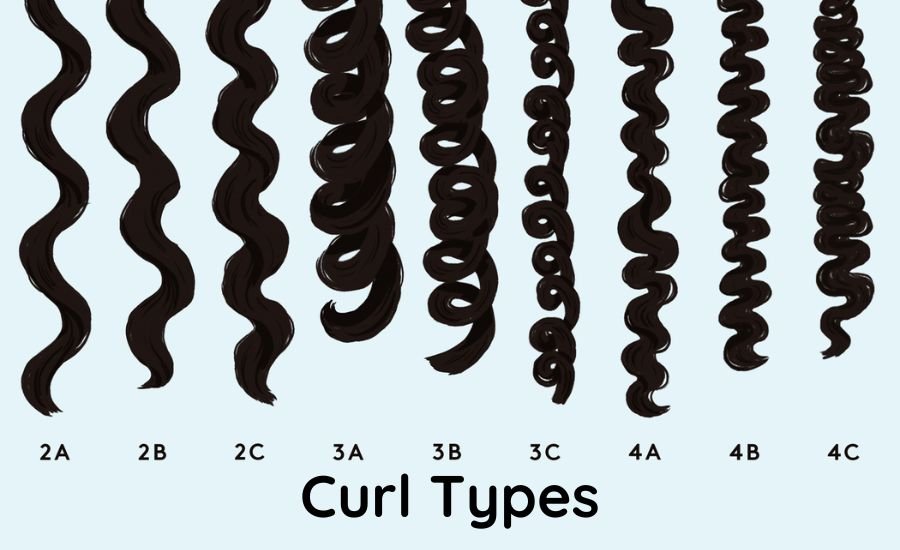Curl types are important to know because not all curls are the same! From wavy to coily, every curl type needs a little something special to stay happy and healthy. By understanding curl types, you’ll be able to pick the best products and methods to make your curls look their best.
Knowing your curl type can help you avoid products that don’t work and find the perfect ones that do. Whether your curls are loose waves or tight coils, every type has unique needs. At Trend Blender, we will dive into the world of curl types and learn how to care for each one!
What Are Curl Types and Why Do They Matter?
Curl types are a way to understand the kind of curls you have. Not all curls look or act the same. By learning about curl types, you can give your hair the right care it needs. Some curls are loose and wavy, while others are tight and curly.
Knowing your curl type helps when choosing hair products. Products that work for wavy hair may not be good for tight curls. With the right products, you can make your hair healthier and easier to manage. Every curl type has different needs, so understanding yours is key.
When you find your curl type, it’s easier to style your hair, too. Knowing what works best for your curls can help you avoid frizz and keep them looking shiny and soft.
How to Identify Your Curl Type Easily
To find your curl type, start by looking at your hair when it’s clean and wet. Wet hair shows the natural curl pattern better. Look at your curls closely—are they wavy, curly, or kinky? These are clues to help you know your curl type.
Using a mirror can help you examine each part of your hair. Some parts may be wavy, while others are tighter curls. It’s normal for hair to have more than one curl type. This is why it’s important to look at all sections.
If you’re unsure, a curl chart can be useful. The chart shows examples of different curl types and can help you match your own hair to the right type.
Why Knowing Your Curl Type Changes Everything
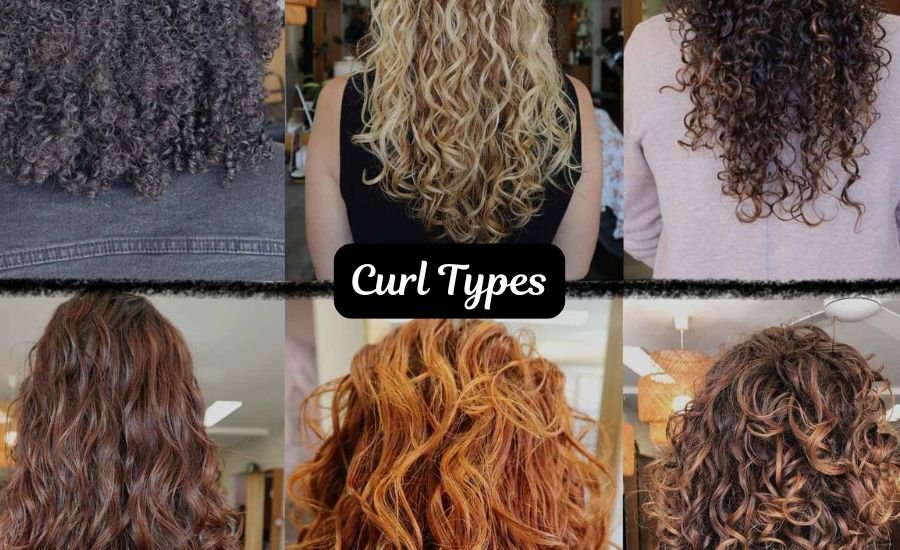
Knowing your curl type can improve your hair care routine. Once you know it, you can choose the right shampoos, conditioners, and styling products. This helps your curls look their best every day.
Each curl type needs different products. For example, wavy curls need light products, while tighter curls need more moisture. Using the wrong products can make your curls dry or frizzy. When you know your curl type, you avoid these problems.
Curl types also change how you style your hair. Some curls are easy to style with just a bit of mousse, while others need creams or oils. By choosing the right products, your curls will look smoother and healthier.
Understanding Curl Types from 1 to 4
Curl types are grouped from 1 to 4. Type 1 is straight hair, with no waves or curls. Type 2 hair is wavy, with gentle curves. Type 3 has clear curls, and Type 4 is the tightest, with coiled or kinky curls.
Each main type has smaller groups, like 2A, 2B, and 2C. These letters show how tight or loose the waves or curls are. The curl chart helps you understand where your hair fits. This makes it easier to pick the right products and style your hair.
Knowing your curl type helps you find the best way to care for it. With practice, you can create a routine that keeps your curls looking amazing every day.
Type 2: Exploring Loose Waves and Light Curls
Type 2 hair has soft waves. It starts at 2A, which is just a hint of wave, and goes up to 2C, which has more body and volume. These waves can get flat easily, so light products work best.
Type 2 hair doesn’t need heavy creams. Instead, mousses or sprays help give volume without making it greasy. Finding the right balance keeps these waves bouncy and fresh-looking all day.
Type 2 waves may also need protection from humidity. Humid air can make them frizzy, so using anti-frizz products can keep your waves smooth.
Type 3: Discovering Springy and Defined Curls
Type 3 curls are known for their bouncy and well-defined shape. These curls start as loose loops in 3A and get tighter as they move to 3B and 3C. With Type 3 curls, the main goal is to keep them hydrated and frizz-free.
Since Type 3 curls are more defined, they need moisture to look their best. A curl cream or leave-in conditioner can help keep them soft and reduce frizz. Avoid brushing these curls when dry because it can disturb the shape and make them frizzy.
Styling gels work great for Type 3 curls, as they help hold the shape without weighing them down. The key is to use lightweight products that won’t make your curls feel heavy.
Type 4: Learning About Kinky and Coily Curl Types
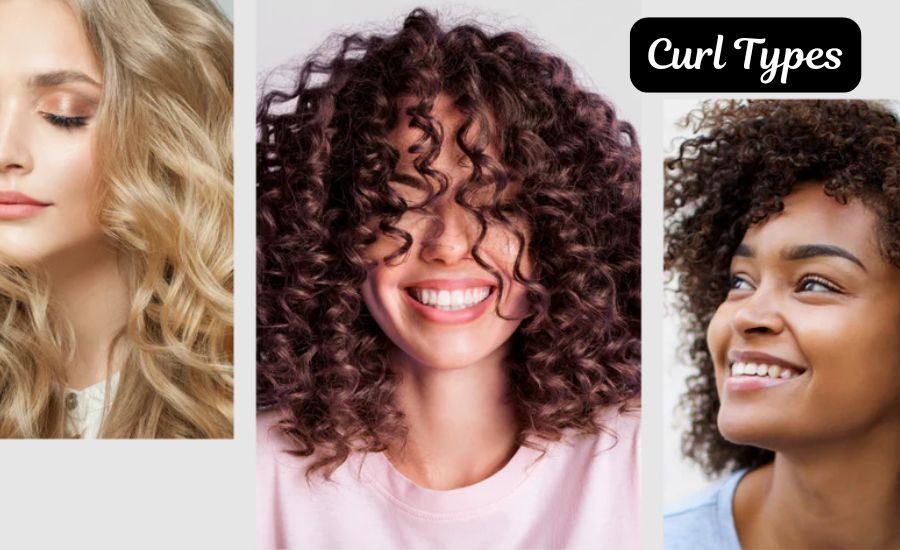
Type 4 curls are the tightest and most coily curl type, often shaped like small coils or zigzags. They can be fine or thick, and each strand is densely packed. Type 4 curls range from 4A, which has a looser coil, to 4C, which has the tightest pattern.
These curls need lots of moisture to stay healthy and soft. Heavy creams and oils help keep them hydrated and prevent breakage. Deep conditioning is important for Type 4 curls to keep them strong and easy to manage.
Because they are fragile, gentle handling is best. Using a wide-tooth comb and moisturizing sprays can help detangle without causing breakage. Regular moisturizing keeps these curls beautiful and defined.
How to Check Your Curl Type at Home
To check your curl type at home, start with clean, wet hair. Let it dry naturally and look at the curl pattern without any products. Notice if your hair is straight, wavy, curly, or coily.
A mirror helps you examine each section closely. It’s common to have a mix of curl types, so don’t worry if you see more than one pattern. Compare your hair to a curl chart to match your curl type.
Once you find your curl type, you can pick products made for it. This simple check can help you find a routine that keeps your hair looking its best.
Best Products for Each Curl Type
Each curl type benefits from different products. Wavy hair (Type 2) needs light products like mousses or sprays. Curly hair (Type 3) enjoys creams and leave-ins to reduce frizz. Coily hair (Type 4) thrives with heavier creams and oils to lock in moisture.
Shampoos and conditioners made for your curl type can make a big difference. Sulfate-free products keep curls healthy without stripping natural oils. Each curl type has specific needs, so finding the right products can make curls manageable and beautiful.
Using the right products helps you style your hair easily and keeps your curls soft and shiny.
Simple Tips for Styling Different Curl Types
Use a Leave-In Conditioner
- A leave-in conditioner helps with detangling and adds moisture, especially for curly and coily hair. It keeps curls soft and manageable for styling.
Choose the Right Styling Product
- Wavy hair (Type 2) benefits from lightweight mousses, while tighter curls (Type 3 and 4) often need creams or gels to enhance and hold their shape.
Apply Products to Wet Hair
- For best results, apply styling products to damp or wet hair. This helps lock in moisture and define the curls without frizz.
Avoid Touching Curls While Drying
- Touching curls as they dry creates frizz. Try air-drying or using a diffuser on a low setting to keep curls defined and reduce frizz.
Scrunch to Add Volume
- To give curls more bounce, scrunch hair gently from the ends to the roots while drying. This works especially well for loose curls and waves.
Seal with a Light Oil
- A small amount of oil can help seal in moisture, reduce frizz, and add shine, especially for coarser curl types.
Use a Wide-Tooth Comb or Fingers
- Combing with fingers or a wide-tooth comb helps avoid breakage and keeps curls intact, perfect for wavy and curly hair alike.
Common Mistakes to Avoid for Each Curl Type
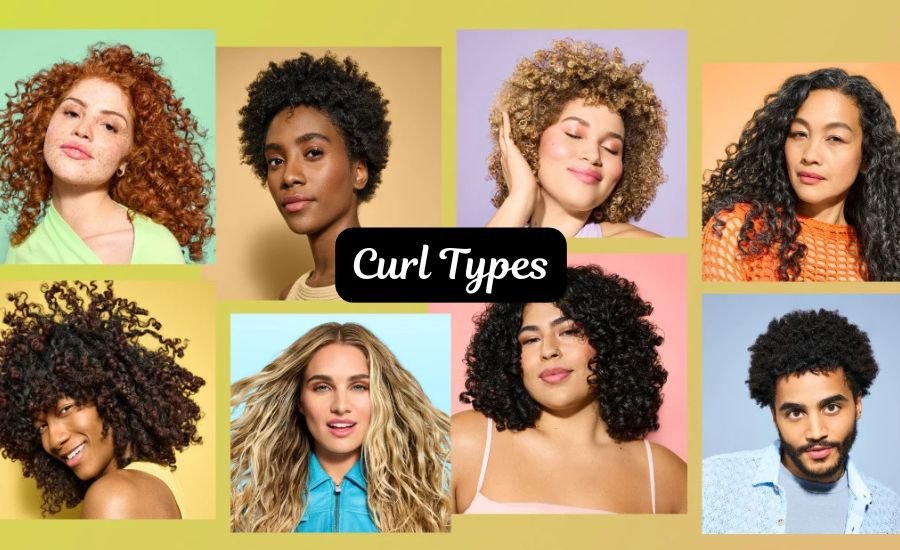
Many people make mistakes when caring for their curls. Using products with harsh chemicals can make curls dry and frizzy. Avoid using regular towels, which cause frizz; instead, use a microfiber towel for drying.
Brushing dry curls is another common mistake. It can break the curl pattern and create frizz. Instead, use a wide-tooth comb on wet hair to avoid damage. Knowing these common mistakes helps you keep your curls soft and defined.
By avoiding these mistakes, you protect your curls and keep them looking their best.
Curl Type Chart: Find Your Curl Pattern
A curl type chart shows the four main curl types and their subtypes. Type 1 is straight, Type 2 is wavy, Type 3 is curly, and Type 4 is coily. Each type has smaller groups like 2A, 2B, and 2C that show different patterns.
Using a chart helps you quickly find your curl type. By comparing your hair, you get a better idea of the products and styling tips that work best for you. A curl type chart is a handy tool to understand your unique hair.
With the chart, you can easily find products that suit your curls and help them look amazing.
How Curl Types Affect Your Hair Routine
Your curl type decides what kind of hair routine you need. Wavy hair may only need light products, while coily curls need heavier creams and oils. Each curl type has different needs for washing, conditioning, and styling.
For curly hair, deep conditioning once a week keeps curls soft. For coily curls, regular moisturizing helps prevent dryness and breakage. Understanding your curl type allows you to create a routine that keeps your curls healthy.
Your hair routine becomes easier and more effective when you know what works for your curls.
Must Read: Hair Washer GWT460AW Length and Width Height Width
The Science Behind Curl Types and Shapes
The shape of your hair follicles determines your curl type. Curly hair follicles are oval or asymmetrical, which gives hair its curl pattern. Straight hair has round follicles, so the hair grows evenly without curls.
Scientists believe that genes play a big role in curl types. Your curl type is unique to you, based on the shape and size of your follicles. Learning about this science can help you understand why each curl type needs different care.
Knowing the science helps you take better care of your curls and choose products that support their shape.
How Curl Types Are Different in Every Person
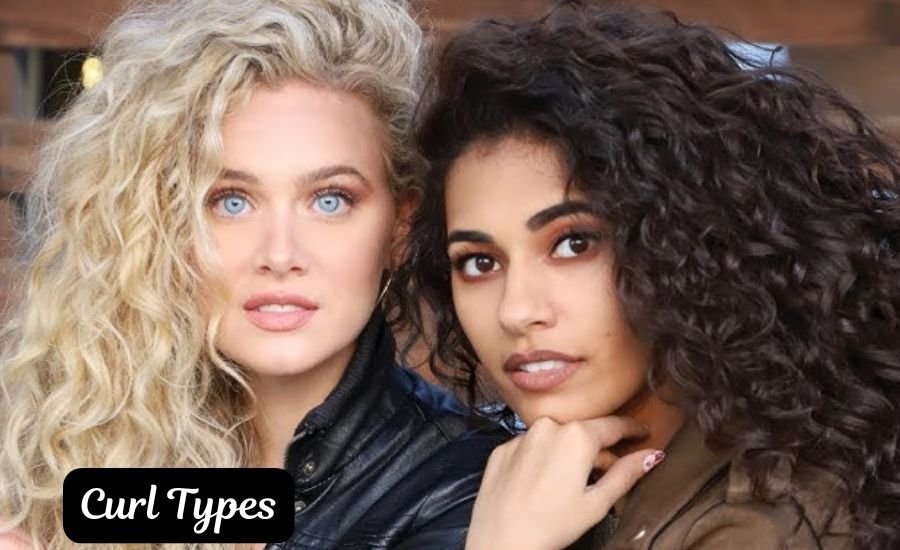
Curl types can vary even among family members. Some people have mixed curl patterns on one head, like wavy hair on top and curly hair underneath. This is common and makes each person’s curls unique.
Environmental factors like weather can also affect curl types. Humidity may make curls tighter, while dry air can loosen them. This natural variation means your curls may look different depending on the day.
Understanding that curl types vary helps you stay flexible with your hair care routine.
Finding Your Perfect Curl Type Routine
Creating a routine based on your curl type can make styling much easier. For wavy hair, use a mousse and a light conditioner. For curly hair, try a curl cream and deep conditioner. Coily hair needs a leave-in conditioner and heavy cream.
Experiment with products until you find what works best. Start with small amounts and add more if needed. Building a perfect routine can take time, but the results are worth it.
A good curl routine can make your hair healthier and easier to style.
Top Hair Care Myths for Each Curl Type
Myth: All Curls Need the Same Products
- Each curl type has different needs. Wavy hair benefits from lightweight products, while coily hair thrives with rich, moisturizing creams.
Myth: Curly Hair Should Be Washed Daily
- Washing curls too often strips them of natural oils. Washing once or twice a week usually keeps curls healthy.
Myth: Sulfates Are Okay for Curly Hair
- Sulfates can dry out curls and cause frizz. Opt for sulfate-free shampoos to keep curls hydrated and smooth.
Myth: Towel Drying Is Best
- Towels cause frizz and disrupt curl patterns. Using a microfiber towel or cotton T-shirt is gentler on curls.
Myth: Brushing Curls Is Fine
- Brushing breaks up curl patterns and leads to frizz. Use a wide-tooth comb or finger detangle while hair is wet.
Myth: Curls Don’t Need Moisture in Humid Weather
- Humidity can dry out curls. Applying moisturizing products helps protect curls from frizz in humid weather.
Myth: Cutting Curls Straight Works Best
- Curly hair cuts need special attention. Layering keeps curls bouncy, while straight cuts often lead to odd shapes.
Myth: Oils Are Bad for Curly Hair
- Lightweight oils can help lock in moisture, especially for curlier types that struggle with dryness.
Conclusion
Understanding your curl type can make caring for your hair so much easier! Each curl type, from wavy to coily, has its own needs and special way to stay healthy and look its best. By knowing your curl type, you can pick the right products and routines to keep your curls soft, shiny, and full of bounce.
Remember, your curls are unique, and they might even change from day to day. Embrace the beauty of your natural curls and have fun experimenting with different styles and tips! With the right care, your curls can look amazing and stay healthy, no matter the type.
Read Next: Cailap Oy Marketing Hair Accessories
FAQs
Q: What are the main curl types?
A: The main curl types are divided into four categories: Type 1 (straight), Type 2 (wavy), Type 3 (curly), and Type 4 (kinky or coily). Each type has its own unique patterns and needs.
Q: How can I find my curl type?
A: You can find your curl type by examining your hair when it’s wet and noting the curl pattern. Using a curl type chart can also help identify if you have waves, curls, or coils.
Q: Why is it important to know my curl type?
A: Knowing your curl type helps you choose the best products and routines for your hair, making it easier to keep your curls healthy and well-defined.
Q: Do different curl types need different products?
A: Yes! Each curl type benefits from specific products. For example, wavy hair needs lightweight products, while coily hair needs heavier creams for moisture.
Q: Can my curl type change over time?
A: Yes, curl types can change due to factors like age, hormones, and damage. Taking good care of your hair can help keep your curls strong and healthy.
Q: What are common mistakes to avoid with curly hair?
A: Common mistakes include over-washing, using harsh shampoos, and skipping conditioner. Always use products suited for your specific curl type.
Q: How often should I wash curly hair?
A: Curly hair doesn’t need frequent washing. Most people wash their curls once or twice a week to keep natural oils and moisture intact.
